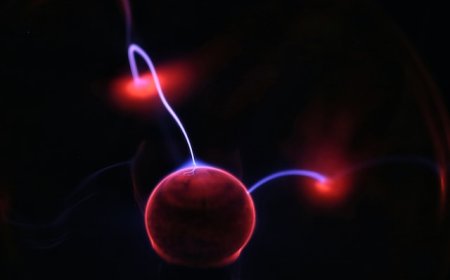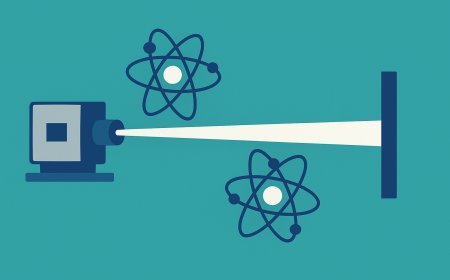Superconductivity Explained: How Resistance-Free Materials Transform Technology
Discover how superconductors achieve zero electrical resistance and expel magnetic fields. Learn about the discovery of superconductivity, the BCS theory of Cooper pairs, types of superconductors, high-temperature materials, and applications ranging from MRI magnets and maglev trains to quantum computing and power cables.

Superconductivity is a striking physical phenomenon where certain materials lose all electrical resistance and become perfect conductors when cooled below a characteristic critical temperature. In the superconducting state, electrons pair up in a coordinated way that allows them to move through the lattice without scattering. This means that an electric current can flow indefinitely without any energy being dissipated as heat, a behaviour that cannot occur in ordinary conductors. In addition to zero resistance, superconductors also expel internal magnetic fields via the Meissner effect, causing an applied magnetic field to be pushed out of the material. Together, these properties make superconductors unique and useful for creating strong magnets and transmitting power with minimal losses.
Discovery and Theoretical Explanation
Superconductivity was discovered in 1911 by Dutch physicist Heike Kamerlingh Onnes when he measured the resistance of mercury at very low temperatures. To his surprise, the resistance dropped to an immeasurably small value when the metal was cooled below about 4 kelvin. Over the next decades researchers observed the same behaviour in other metals such as lead and tin. While experimental progress was steady, a theoretical understanding remained elusive until 1957, when John Bardeen, Leon Cooper and Robert Schrieffer developed the BCS theory. Their work explained that electrons can form bound pairs through a weak attraction mediated by vibrations of the crystal lattice (phonons). These so‑called Cooper pairs behave collectively as a quantum fluid with a gap in their energy spectrum, preventing scattering and thereby giving rise to zero resistance. A hallmark of superconductors, the Meissner effect, arises because the superconducting condensate responds to an external magnetic field in a way that causes screening currents to flow on the surface, expelling magnetic flux from the interior.
In a normal metal, electrons move through a lattice of positive ions and frequently scatter, which produces resistance and generates heat. In a superconductor below its critical temperature, electrons form Cooper pairs that move in a correlated way. The paired electrons have a combined integer spin, so they act like bosons rather than fermions and can occupy a single quantum state. A small energy gap separates the superconducting state from excited states; thermal energy at low temperatures is not enough to break the pairs. This energy gap also leads to an exponential suppression of scattering, which explains the disappearance of electrical resistance. When a magnetic field is applied to a superconductor, currents induced at the surface exactly cancel the applied field inside. This effect, called the Meissner effect, means superconductors are not just perfect conductors but perfect diamagnets. However, extremely high magnetic fields can penetrate via quantised vortices and destroy superconductivity if the field exceeds a critical value.
Superconductors fall into two broad categories. Type I superconductors, typically elemental metals like tin and lead, show a complete Meissner effect and lose superconductivity abruptly when the external magnetic field exceeds a critical field. Type II superconductors, such as niobium‑tin alloys and high‑temperature cuprates, allow magnetic flux to penetrate in quantised vortices above a lower critical field up to an upper critical field. In this mixed state, called the vortex lattice, the material remains superconducting but contains magnetic vortices around which Cooper pairs circulate. Type II materials are particularly useful because they remain superconducting in much higher magnetic fields.
Applications
The unique properties of superconductors have enabled a range of technological applications. Superconducting magnets are used in magnetic resonance imaging (MRI) scanners to produce stable, high‑field magnets that allow doctors to view soft tissues inside the body. They are also employed in particle accelerators to bend and focus charged particle beams, and in research tools such as nuclear magnetic resonance spectrometers. The levitation effect that arises when superconductors expel magnetic fields forms the basis of magnetic levitation (maglev) trains, which float above a track and reduce friction dramatically. Energy storage devices called superconducting magnetic energy storage systems (SMES) store energy in the magnetic field of a persistent current and can release it quickly to stabilise power grids.
In power transmission, superconducting cables can carry much larger currents than copper cables of the same size and do so with negligible losses. Several demonstration projects have installed superconducting power lines in urban areas, although the requirement for cryogenic cooling increases cost and complexity. Superconducting materials also form the basis of ultra‑sensitive sensors, including superconducting quantum interference devices (SQUIDs) that detect tiny magnetic fields and transition‑edge sensors for astronomical instruments. In quantum computing, qubits based on Josephson junctions use the macroscopic quantum state of a superconducting circuit to encode information; they are among the leading platforms for building scalable quantum processors.
High‑Temperature Superconductors and New Materials
For many years, superconductivity could only be achieved at very low temperatures close to absolute zero, requiring expensive cooling with liquid helium. This changed in 1986 when Bednorz and Müller discovered a ceramic copper‑oxide compound that became superconducting at around 35 kelvin. Their discovery opened the era of high‑temperature superconductors, and critical temperatures soon climbed above 77 kelvin, the boiling point of liquid nitrogen. High‑temperature cuprate materials can operate in liquid nitrogen at 77 kelvin, making them more practical and less expensive to cool than earlier superconductors. In recent years, iron‑based superconductors have also been discovered, adding diversity to the family of high‑temperature materials.
Research continues to search for materials that superconduct at even higher temperatures and under more practical conditions. Hydrogen‑rich materials under extreme pressures, such as hydrogen sulfide and lanthanum hydride, have shown superconductivity at temperatures approaching 200 kelvin when compressed at millions of atmospheres. While these materials are not yet viable for applications, they provide clues about the mechanisms that might enable room‑temperature superconductivity. Organic and carbon‑based materials, including graphite intercalation compounds and certain polymers, also exhibit superconductivity under specific conditions. The ultimate goal is to discover a superconductor that operates at ambient temperature and pressure, which would revolutionise energy transmission and technology.
Challenges and Limitations
Despite their remarkable properties, superconductors have limitations. They must be cooled below their critical temperature, which requires refrigeration equipment and energy. If the temperature rises or the current exceeds a critical value, superconductivity can be lost in a phenomenon called quenching; the sudden transition back to a normal resistive state can produce heat and damage the material. Another challenge is that many superconductors are brittle ceramics that are difficult to manufacture into long wires. High‑temperature cuprate tapes and coated conductors have made progress, but they are still costly and have performance limitations such as flux creep, in which vortices move and dissipate energy over time.
Magnetic fields also limit applications. When the field inside a superconductor exceeds its upper critical field, the superconducting state collapses. This places constraints on magnet design and power transmission. In addition, mechanical stress and vibrations can degrade performance. Researchers are developing alloys and composite materials that improve flexibility and critical current densities.
Future Prospects
Superconductivity remains a vibrant area of research. Scientists are exploring new classes of materials, including topological superconductors that host exotic quasiparticles like Majorana fermions, which may be used for fault‑tolerant quantum computing. Better understanding of pairing mechanisms in unconventional superconductors could guide the design of higher‑temperature materials. Advances in cryogenics and refrigeration technologies are reducing the operational costs of superconducting systems. As fabrication techniques improve, we may see more widespread use of superconducting cables in power grids, enabling more efficient distribution of electricity. In medicine and science, more powerful magnets built from advanced superconducting wires will allow higher‑resolution imaging and more energetic particle accelerators.
Superconductivity represents one of the most fascinating and useful quantum phenomena discovered in the last century. By pairing up and moving in lockstep, electrons in certain materials can flow without resistance and exclude magnetic fields. These remarkable properties have already enabled medical imaging, scientific research and experimental transportation technologies. While current superconductors require low temperatures and careful engineering, ongoing research into high‑temperature and high‑pressure materials, along with improvements in manufacturing and cooling, promises to expand their use. As we continue to uncover new materials and deepen our understanding of the superconducting state, the dream of loss‑free power transmission and powerful quantum devices moves closer to reality.
What's Your Reaction?













































































































